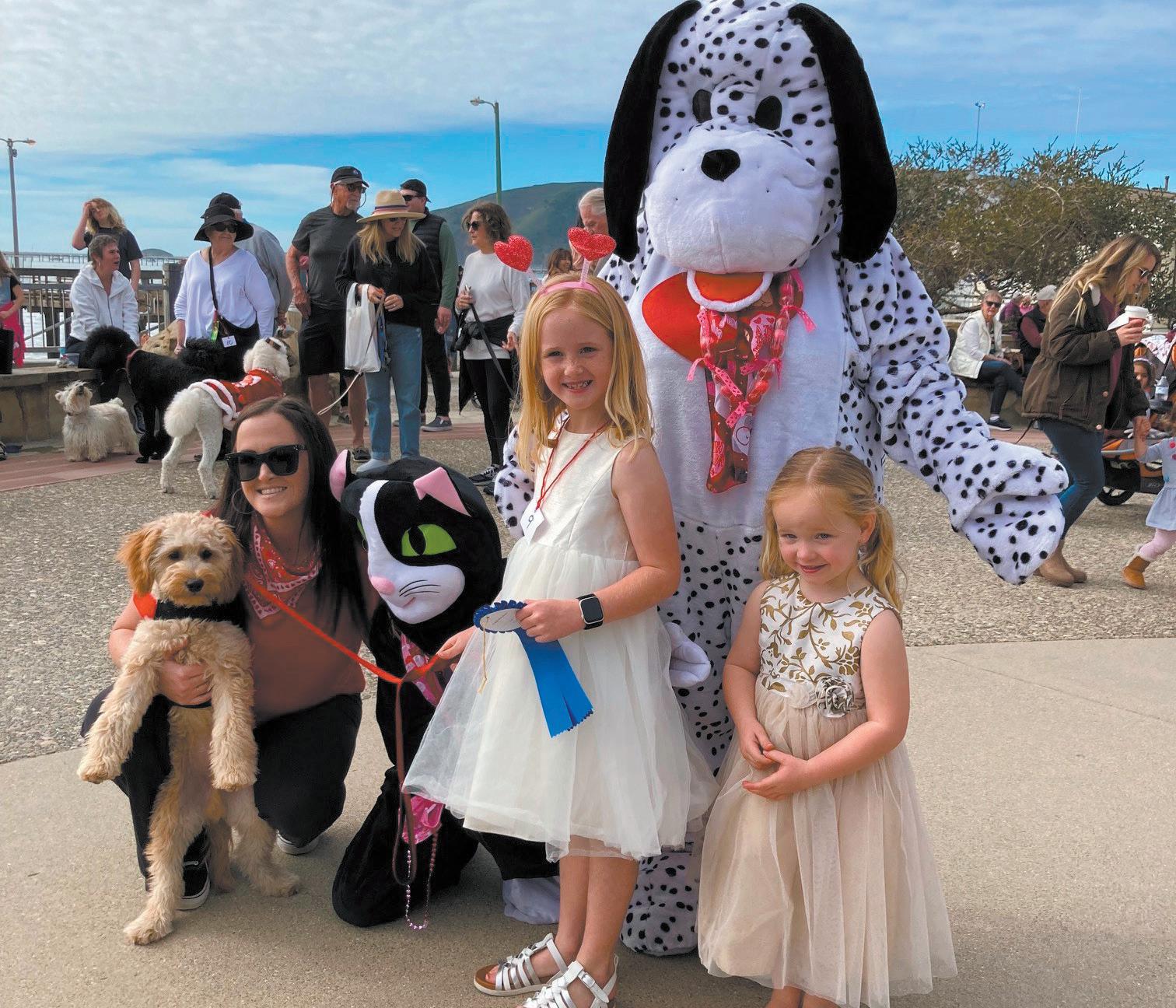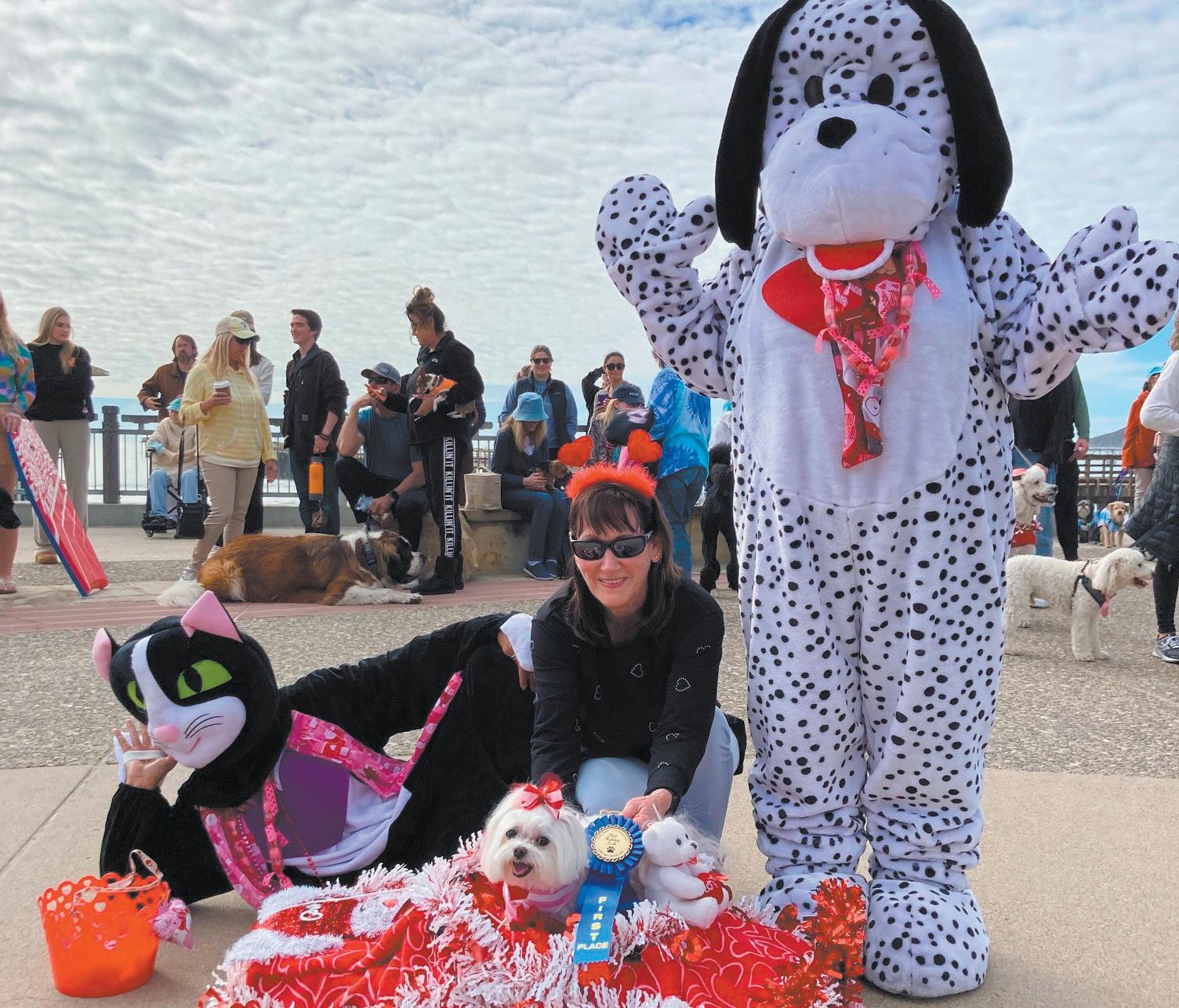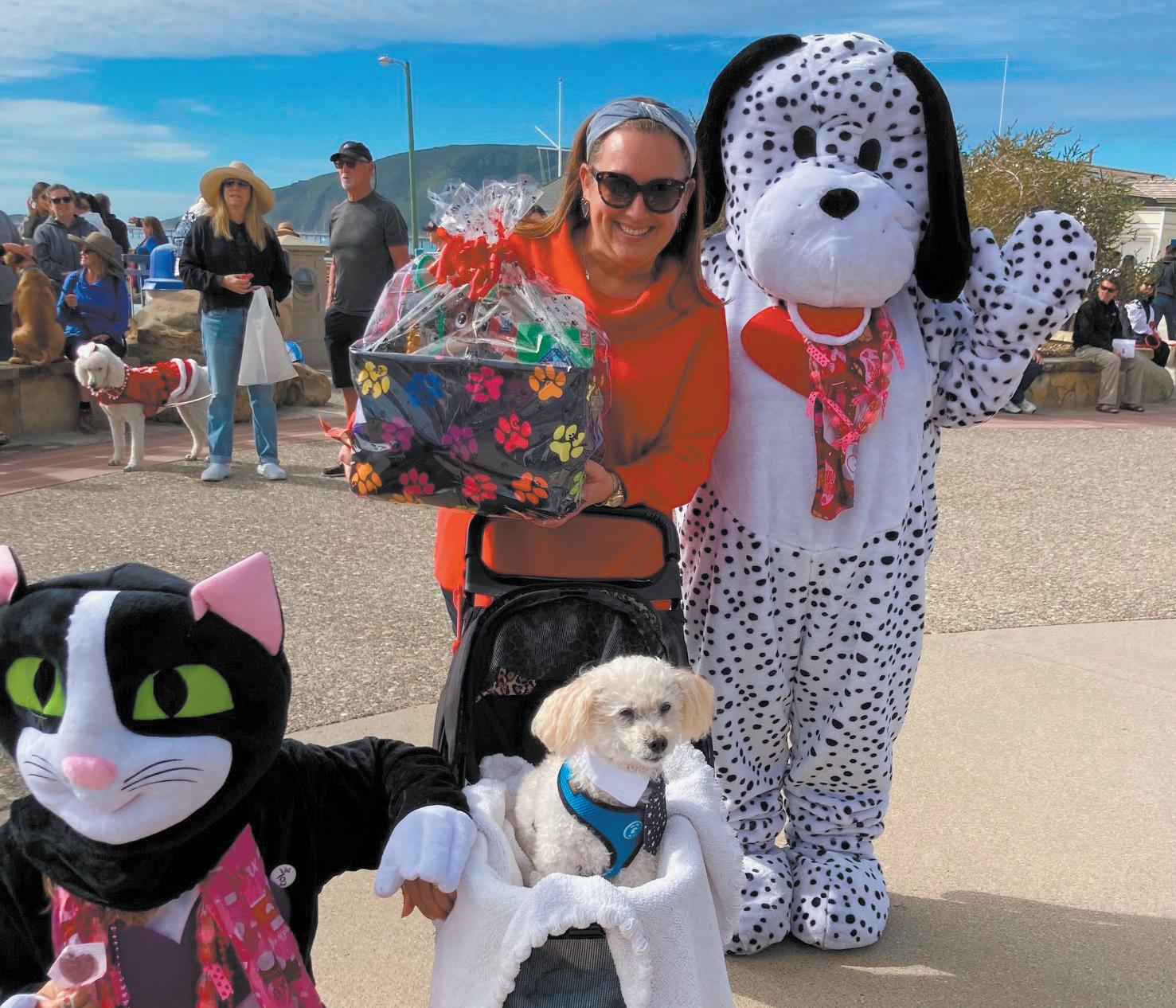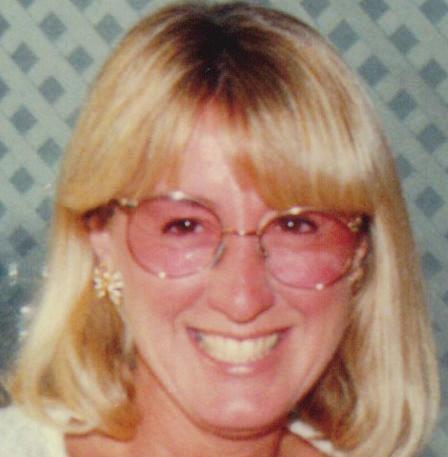
3 minute read
Cupid Paws Doggie Parade



By MARY FOPPIANO
Our annual Santa’s Doggie Parade was rained out on December 10. So that we would not disappoint our local pet parents and their adorable furry friends, as well as our many community members who really enjoy our parades, we hosted our first Cupid Paws Doggie Parade on February 4. The very happy-looking handsome pup on the flyer was my lovable little Buddy, who passed away unexpectedly on March 10. I know that we all have to go through loss sometimes in our lives — Whether it is the loss of a family member, friend, or pet. From the first day I adopted Buddy, I knew he was special, and when he was gone, a small piece of my heart was gone. With the help of my best friend, I was able to adopt Rudy, a young Poodle/Maltese dog that was abandoned in Porterville and available at the Spay and Neuter Clinic, a nonprofit organization. Nothing can bring back Buddy, but Rudy is very smart and friendly to everyone, and I feel so very lucky to bring him into our lives.Moving on to our family fun parade, our wonderful judges were Lead Judge Steve Kobliska; Supervisor Dawn Ortiz-Legg with her new family member Frankie, Amy Kuef - fler, recently retired from the Avila Bay Club, and ABCA President Robin WeedBrown. Petco Arroyo Grande once again donated yummy dog treat bags to all our puppies and community member Karen Blue donated two beautiful raffle baskets. Cheryl Stepaniak donated the use of her stereo system and was the Dalmatian and Bev Aho was the Black Cat. The winners of our Costume Contest were:


• Best Costume: David Bernhardt with Cosette
• Best Dog/Owner Look Alike: Melissa Montgomery with Brody Bones

• Best Holiday Look: Jeri LaMarca with Lexi
• Funniest Costume: Angela Hepburn with Xolo Vente and Isabella Saconi with Gaucho
• Best in Show: Diane Kilfogle and Susan Davis with Tux and Dansby All of our participants were entertaining with their colorful, holiday themed costumes and, hopefully, will be part of our 4th of July Doggie Parade which follows our annual Pancake Breakfast at the Community Center. Hope to see all of you to celebrate Avila Beach and all that we have to offer!
On July 1, 1939, the Lighthouse Service — a 150-year-old institution — ceased to exist. As part of FDR’s Reorganization Plan No. II, it was transferred to the Treasury Department and consolidated with the Coast Guard. At the time of this transition, lighthouse keepers were given several options: they could quit; retire if they were eligible; remain a civilian keeper wearing the United States Lighthouse Service uniform; or transfer into the Coast Guard.
In 1939, Point San Luis had three keepers: head keeper John Robert “Bob” Moorefield, 1st assistant Thomas Guy Lewis, and 2nd assistant Jens Otto Wagner. All three initially chose to remain civilian keepers, even though there were disadvantages to doing so. By staying Civil Service employees, for example, keepers were eligible for the draft; although the United States had not yet entered World War II, it had begun in Europe that September.
Lewis, born in 1892, was a World War I veteran and had been a keeper at several lighthouses before requesting a transfer to Point San Luis in June 1938. It was a promotion for him, from 2nd assistant to 1st assistant, although the promotion came with a reduction in pay. Wagner, born in 1896, transferred to Point San Luis from St. George Reef in August 1938. The two families lived side-by-side at the light station in the two-story duplex built in 1890. They did not get along. At one point in 1940, Lewis reported to Moorefield that Wagner’s wife threatened to slap Lewis in the face and sue him. One of the Lewis kids bullied one of the Wagner boys, once locking him in a chicken house and refusing to let him out.

It must have been a relief to all concerned when Wagner resigned as a keeper in November 1940 to take a position with the War Department in San Francisco. Peace at the light station, at least temporarily, was restored.
Replacing Wagner as 2nd assistant was John Majon “Jack” Stelling. With Stelling’s arrival, the light station’s “Coast Guard era” was officially underway.
Stelling, born in 1919, was an enlisted man, a seaman 1st class; his only previous “keeper” experience was aboard a Coast Guard lightship in San Francisco Bay. He and his wife, June, arrived at the station on December 13, 1940. The couple stayed until June 1941, when, presumably, Stelling was honorably discharged. (He enlisted again in 1944 during World War II, this time in the Navy.)
Stelling was replaced in July 1941 by boatswain’s mate second class Donald Albert “Don” Fiess, the second member of the Coast Guard to be assigned to Point San Luis. Fiess, born in 1918, had just married Ellogene Brown in March 1941. He had previously served at the Farallon Island light station and on the Blunts Reef lightship.
Circa 1940 photograph of Don Fiess








